You may know banana plugs, but you may not have noticed that other types of speaker wire connectors make a difference in their respective fields. For better audio performance, you might consider using some connectors to enhance the sound experience. Speaker wire connectors are important for optimal sound quality, especially in home stereo systems and home theaters.
Do you want to upgrade your home audio setup? If you're looking for a speaker wire connector for better audio performance, you are in the right place. In home audio systems, speakers play a vital role in producing great sound, and speaker wire connectors also help improve sound quality. Don’t worry if you’re not a professional, this article will guide you through the types of speaker wire connectors and help you choose the right speaker wire connector.
What Are Speaker Wire Connectors?
Speaker wire connectors are used to make connections between speakers, amplifiers, and receivers. It is known that these connectors come in a variety of types and shapes, but they all play a huge role in protecting bare speaker wires. Not only do they simplify the process of connecting speaker wires, but they also maintain a solid connection between the speaker and its terminals. Speaker wire connectors are manufactured in widespread applications across various audio setups, from professional systems to home audio systems. They can be used for digital audio equipment, home theater systems, car speakers, and home stereo setups.
Speaker Connector Types
In general, speaker wire connectors come in a variety of shapes and sizes. They are used to make solid electrical connections between speaker wires and speaker terminals. The type of speaker wire connector can be selected for your specific needs. Let’s go through common speaker wire connectors in the following content.
Banana Plugs
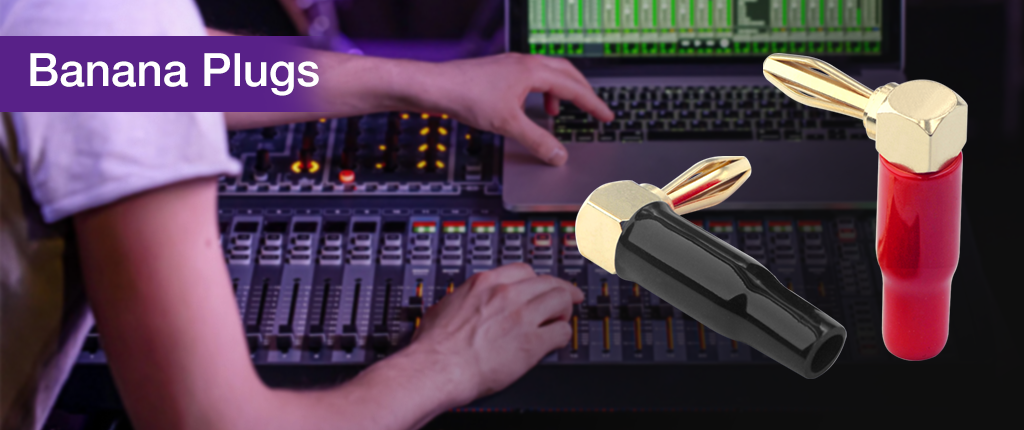
Known for their ease of use and versatility, Banana plugs are widely used and accepted. These connectors feature “leaves” around the contact tip. They have a cylindrical shape with a sharp point at one end, which fits into the speaker terminal. They are commonly used for speakers with a binding post. There are several types of banana plugs, such as double and angled banana connectors. Double or dual banana plugs consist of positive and negative connectors, making a reliable connection. The angled banana plugs usually feature a 90-degree angle for easy installation in tight places, providing a robust and secure connection.
Spade Connectors
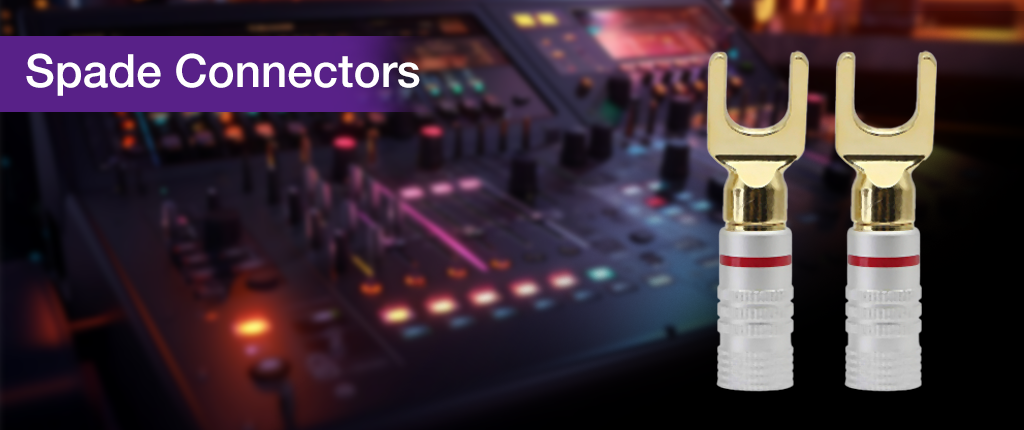
Spade connectors, also known as fork terminals or U-shaped connectors, feature a metal fork shape. Spade connectors can be straight or angled, but they have the same function. A spade connector can be attached to the speaker through crimping. Spade connectors are generally used in audio and electrical applications, such as combo amps and amplifiers.
Pin Connectors
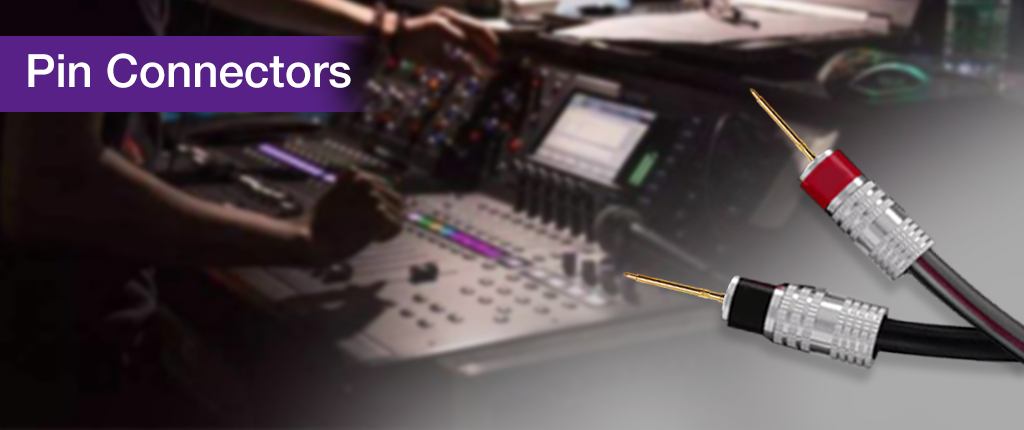
Pin connectors resemble banana plugs but they appear smaller in size. They also consist of a metal, cylindrical pin with a spring-loaded collar. These connectors are also easy to install and the installation is also the same as that of a banana plug. Pin connectors are not commonly used but can also be a great choice if you don’t have other connectors.
XLR Connectors
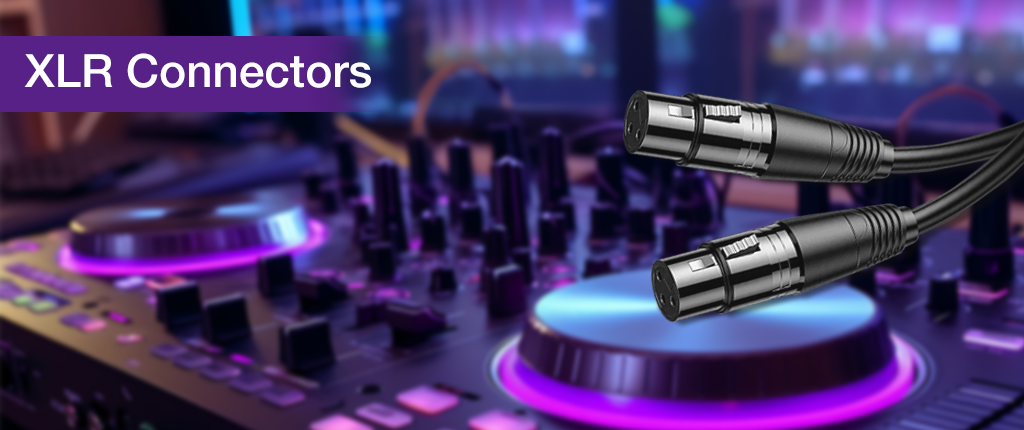
XLR connectors are designed in both male and female versions. Male connectors feature several pins while female connectors have corresponding receptacles. Male XLR connectors usually come with three pins, which can meet the needs of balanced audio signal transmission. Pin one is used for grounding and shielding, ensuring less external interference and noise. The other two pins are used for transmitting positive and negative signals. XLR connectors provide a reliable and stable connection in professional long-distance audio applications.
Speakon Connectors
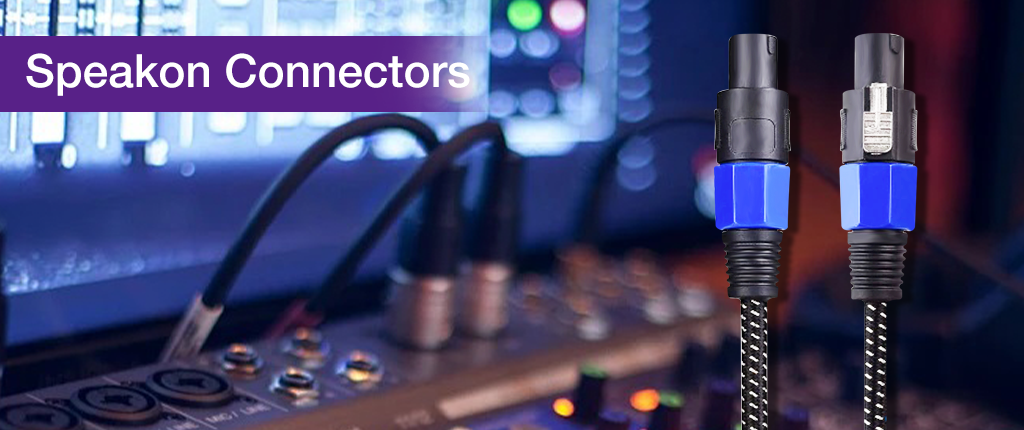
Speakon connectors, also known as speaker twist connectors, are widely used in professional audio systems. These connectors are available in 2-pole, 4-pole, and 8-pole designs, offering flexibility for various audio setups. 2-pole Speakon connectors can be matched with 4-pole ones; 4 poles allow for bi-amping without the need for two separate cables. 8-pole connectors are commonly used in larger and more complex audio systems for their high currency. Known for their durability and reliability, Speakon connectors are popular in live sound reinforcement systems, concert venues, recording studios, and other professional audio applications.
Note: Bi-amping is the means of respectively driving different audio frequency ranges of the speaker by using two amplifiers; Bi-wiring is related to passive crossover mode. You’ll need two sets of speaker wires from the same amplifier to two speakers.
How to Choose the Right Speaker Wire Connectors?
The selection of speaker wire connectors will depend on your preferred speaker and audio setups, but here are some factors that you should consider:
Speaker Wire Gauge
Before using the right connectors, understanding the speaker wire gauge is important. According to American Wire Gauge or AWG, the speaker wire gauge relates to the thickness of the speaker cable. The value of a number is inversely related to the thickness of the cable. That means a smaller number means a thicker conductor whereas a larger number indicates a thinner wire.
In audio systems, it is common to use a speaker wire with a gauge from 12 AWG to 16 AWG. For professional systems such as Hi-Fi audio systems, a 12-gauge wire is more suitable to transmit a better audio signal; for most cases, a 14-gauge wire is ideal; for average home audio systems, a 16-gauge wire is thinner and more flexible. If you don’t want to cost more, a 16-gauge wire is perfectly adequate for most home speakers.
Connector Materials
The material of connectors can affect the sound quality, so you need to take them into consideration. Generally, four types of materials are widely used in speaker wire connectors: Copper, Silver, Gold, and Aluminum. We will give a brief introduction in the below context and will explain their features about conductivity, cost, and popularity.
- Conductivity: Among the four metals, Silver has the best conductivity; Copper also plays well in conductivity; Gold and Aluminum are not as conductive as copper and silver. So you can choose the connector that is copper for clearer sound.
- Cost: Normally, copper is the most common material used in speaker wire connectors which is economical and practical. Silver and Gold are much more expensive than Copper, but some connectors are gold-plated for better audio performance on the market. Aluminum is lightweight and inexpensive than others, so it doesn’t perform as well as other materials.
- Popularity: Copper and Aluminum are very common on the market because both of them have good conductivity properties. But if you have specific requirements for professional purposes, you can choose the connector in gold or silver.
Overall, the materials can affect the connector but this effect tends to be small unless you are willing to invest in some high-end equipment.
Applications
Speaker wire connectors can be used in a variety range of areas. But the selection of them depends on your needs and preferences. For example, you may use a type of higher-end connector in your home theater but it isn't surprising that you find banana plugs used in professional areas. But, we still have some recommendations for you:
- If you’re a professional such as a musician or an audio engineer, Speakon connectors may be preferable for their locking mechanism, balanced transmission, and reliability. In addition, you can also choose XLR connectors for pro systems.
- If you’re a novice audiophile or an enthusiast, banana plugs may be the best choice.
Installation
The convenience of installation should also be considered. If you don’t want to invest time and effort, we recommend using banana plugs, spade connectors, and pin connectors. They are all easy to use and install. Among these connectors, banana plugs are the most common type which is suitable for most home theaters. If you want to set up your audio system but you’re a beginner, banana plugs can be the prior choice.
Compatibility
The first thing you should ensure is the compatibility between the speaker and amplifier or receiver. If you mix up the connections, they won’t work. For different connectors or cables, they are designed for different terminals. You have already known the right connections between your connectors and their terminals, similarly, you need to consider the compatibility between your speakers and your receivers or amplifiers. There are different connection types on your audio equipment. For example, pin connectors can often be connected with spring clips; and banana plugs or spade connectors are usually used with binding posts. Before using your amplifiers or receivers, you need to check the connection type and decide which connector is right.
How to Install Banana Plugs on Speaker Wire?
Banana plugs are commonly used in the audio system, let's explore the installation of banana plugs.
Step 1: Prepare the following materials and tools:
- Banana Plug
- Wire Stripper
- Speaker Wire
- Cutting plier
- Ruler
- Flat Head Screwdriver
Step 2: Strip off the speaker wire jacket to 22mm and cut off the excess wires according to the plug length.

Step 3: Twist the copper wires into one strand and slide the wire over the banana casing.

Step 4: Loosen the screw with a screwdriver and insert the audio cable from the bottom of the plug.
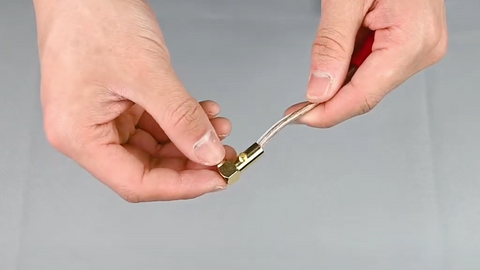
Step 5: Tighten up the screw and put the casing on the banana plug.

Step 6: Repeat the installation steps above for the other end of the banana plug.
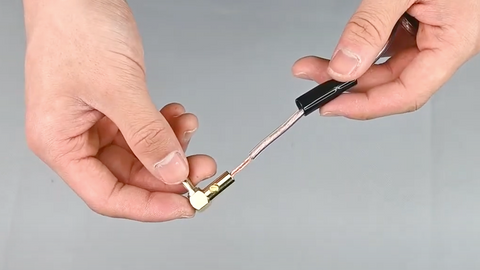
Step 7: Insert the banana plug into the port on the speaker, the receiver or the wall plate.

Conclusion
Overall, speaker connectors provide reliable and efficient connectivity solutions for transmitting audio signals and ensuring optimal sound reproduction across different environments and setups. Whether you’re an audiophile, beginner, or professional, you'll be equipped to choose the right connectors and install them in this article. Investing in a high-performance speaker connector can effectively upgrade your sound quality in the audio system.
FAQs
Which type of speaker wire connector is better?
It depends on your setup requirement, but banana plugs can be a great and cost-effective choice for their easy installation and wide applicability.
Does the speaker wire gauge affect sound quality?
Yes. Thinner speaker wire has a higher impedance and poor conductivity, which affect the transmission of the audio signal; Thicker speaker wire allows for lower impedance and better conductivity, which carries the signal more effectively over long distance.
How do I identify the speaker wires?
When you have red and black wires, red means positive and black means negative; When they are silver and copper wires, silver is positive and copper is negative; If you have a four-conductor speaker wire, red is positive and black is negative for speaker one, yellow or white is positive and red is negative for speaker two. You can also use a Nine-volt battery or a Multimeter to help you test the polarity.
For more information on this topic, you can keep up on our blogs. While VCELINK offers general and basic information for our customers and other visitors to the website, it’s not professional advice.
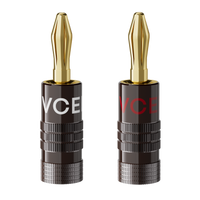
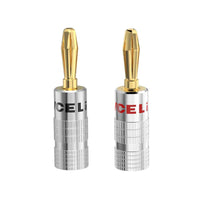
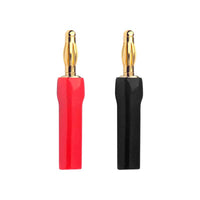
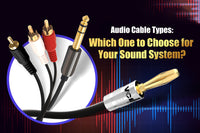
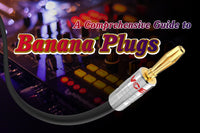
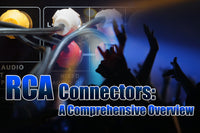
Be the first one to comment.
Leave a comment